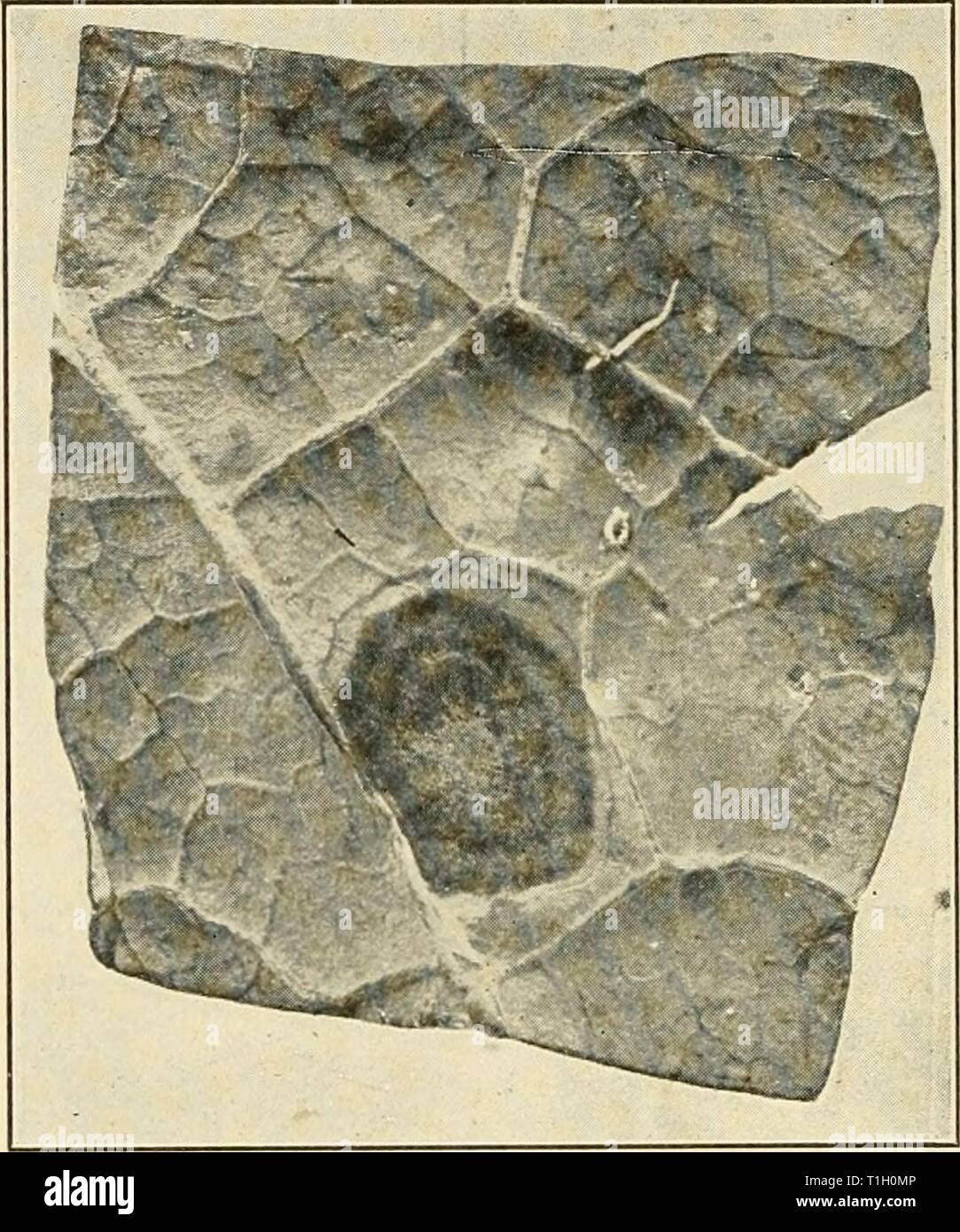Diseases of economic plants (1910) Diseases of economic plants diseasesofeconom00stev Year: 1910 230 DISEASES OF ECONOMIC PLANTS Black mold {Alternaria Brassicoe (Berk.) Sacc). â The affected spots are nearly black, marked concentrically, are circular, and are not definitely bordered, i.e., they shade off gradually into the surrounding healthy tissue. Fig. 108. â CoUard black mold as seen from upper side of the leaf. Original. They enlarge sometimes to 2-3 cm. in diameter. The tissue dries, becomes brittle, and often falls away, leaving ragged holes. The general appearance of the spot as

Image details
Contributor:
Bookend / Alamy Stock PhotoImage ID:
T1H0MPFile size:
5.7 MB (362.1 KB Compressed download)Releases:
Model - no | Property - noDo I need a release?Dimensions:
1291 x 1549 px | 21.9 x 26.2 cm | 8.6 x 10.3 inches | 150dpiMore information:
This image is a public domain image, which means either that copyright has expired in the image or the copyright holder has waived their copyright. Alamy charges you a fee for access to the high resolution copy of the image.
This image could have imperfections as it’s either historical or reportage.
Diseases of economic plants (1910) Diseases of economic plants diseasesofeconom00stev Year: 1910 230 DISEASES OF ECONOMIC PLANTS Black mold {Alternaria Brassicoe (Berk.) Sacc). â The affected spots are nearly black, marked concentrically, are circular, and are not definitely bordered, i.e., they shade off gradually into the surrounding healthy tissue. Fig. 108. â CoUard black mold as seen from upper side of the leaf. Original. They enlarge sometimes to 2-3 cm. in diameter. The tissue dries, becomes brittle, and often falls away, leaving ragged holes. The general appearance of the spot as seen from above is pale green; as seen from the lower surface, shown in Fig. 108, it is densely black, strongly contrasting with